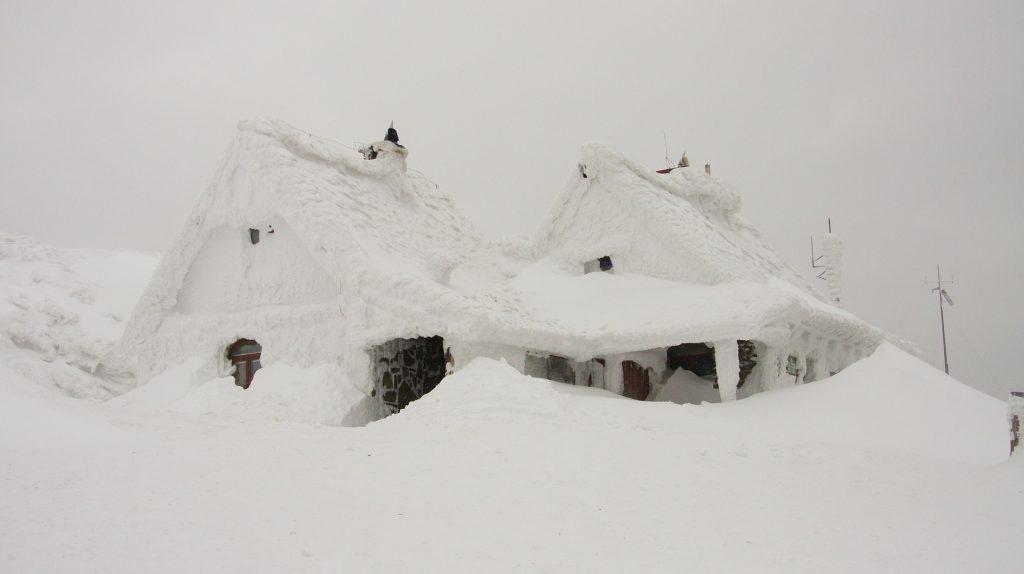
Heavy snow loads can take their toll on your roof and skylights, especially if your skylights are poor quality, improperly installed, or not installed to code. Generally speaking, snow weighs about 20 pounds per cubic foot, but that weight varies depending on the type of snow and how compacted it has become. Your weather and moisture in the air, the configuration of your roof, the direction of the slopes on your roof, wind severity, and other factors all play a role in the density and weight of snow on your rooftop.
There are many things you can do to protect your roof and your skylights. By installing products that are tested for strength and durability, and by working with a skilled, qualified contractor to install your skylights, you can be assured that your skylights should not compromise the structural stability of your roof.
1. Melting snow
Melting snow compacts over time and becomes denser as it sits on the roof. As it freezes, melts, refreezes, and gathers more snow, the layer of snow on your skylights can become heavier. Rain that falls on snow increases the snow’s density and thus the weight of the snow.
It’s very difficult to know how much snow is on your skylights, or how much that snow weighs. When you install skylights on your home or building, you must ensure that your skylights can withstand the level of snow you would expect for your area, and then some, to ensure that your roof will be able to withstand the weight of unusually heavy snows.
2. Building Code requirements.
Most important is to pay attention to building code requirements when installing skylights on your roof. Overestimation of potential snow loads for your area can lead to an unnecessary increase in roof construction costs, while the underestimation of potential snow loads could lead to structural failure of the roof. Following building code requirements should ensure that your roof is just sturdy enough to withstand the snow in any given winter, even when your area gets unusually heavy snow.
VTECH skylights can withstand loads as heavy as 504 psf = 8,064 lbs without compromising the layer of laminate on the inside of the skylight. At the same time, our skylights are no heavier or bulkier than standard skylights. Read more about tests we’ve performed here to learn more about our skylights outperform expectations.
3. Ice Dams
An ice dam is a structural problem that occurs when hot spots in the roof causes snow to melt. The melting snow then refreezes at the base of the roof, near the eaves. The water backs up beneath roof shingles and causes leaks inside the house.
Hot spots on the roof are typically caused by the presence of warm air in the attic and uneven insulation. Ice dams can be a particular problem around skylights. Energy inefficient skylights can become a hot spots resulting in the formation of ice dams.
You can avoid ice dams relating to skylights by installing skylights made from energy efficient materials. VTECH skylights are made from LoĒ³ 366 glass, which provides excellent thermal insulation. The clear coat of silver on the surface of the glass is designed to reflect heat into the atmosphere, thus preventing the “hot spot” phenomenon.
Another way to protect your roof from ice dams is by working with a qualified contractor to ensure that your skylight is properly flashed and your attic is insulated and vented. When installing a new roof, talk to your contractor about installing ice and water shielding on your roof to keep water out if an ice dam does form.
What You Can Do to Protect Your Skylight from Snow Loads
Install VTECH skylights to protect your skylight and roof from snow loads. Work with an experienced and qualified contractor to ensure that your skylight is properly installed. Contact VTECH today to purchase a superior skylight product.